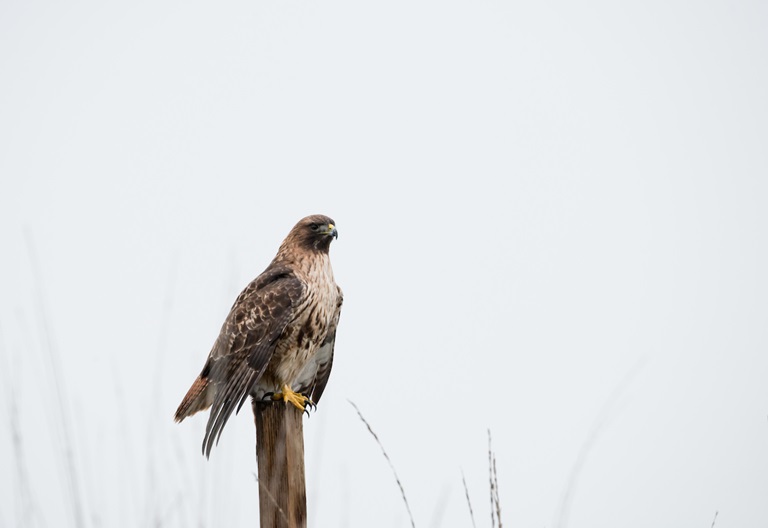DWR continues to protect native species and habitats during COVID-19
Red-tailed hawk in the Delta. DWR/2014
While adapting to social distancing guidelines and recommendations surrounding the COVID-19 pandemic, Department of Water Resources (DWR) staff have been continuing reliable water delivery to 27 million people through the State Water Project (SWP).
Staff in DWR’s Environmental Compliance and Evaluation Branch, within the Division of Environmental Services (DES), ensure that project activities associated with operations, maintenance and/or construction along the SWP, and associated facilities, comply with all environmental regulations.
“We have to make sure that DWR construction projects don’t have negative impacts to wildlife, fish, or water quality,” said Danika Tsao, senior environmental scientist with DES. “Pre-construction surveys and construction monitoring are essential to DWR because they ensure projects happen successfully while minimizing and avoiding impacts to the environment.”
Tsao and a team of surveyors have been working to complete pre-construction monitoring for the Grant Line Canal Barrier Project in San Joaquin County. The project is considered essential for agricultural water use along the Sacramento-San Joaquin Delta and involves constructing three different rock barriers to help manage water levels for local farming.
“The temporary rock barriers are constructed each year to help improve water levels so farmers can continue to pump to irrigate their crops,” Tsao said. “There’s a lot of heavy equipment that gets used for moving the rock and we have to make sure the use of the equipment and barrier itself does not disrupt habitats and ecosystems for native species like fish and birds.”
The area of the Grant Line Canal is known for being a natural habitat for the Swainson’s Hawk, which is on the state’s threatened species list. Monitoring for hawks and other birds currently nesting in the area is required for DWR to build the barriers each year.
“Swainson’s Hawks and other birds are an important part of the ecosystem along the south Delta,” Tsao said. “They’re predators that eat voles, mice, and a lot of other species we would consider pests. They are good for the ag environment.”
The purpose of pre-construction monitoring is to learn and document locations of Swainson’s Hawks and other nesting birds, so crews can have a sense of natural behaviors and if those behaviors change while DWR construction takes place.
“The purpose is so we know where birds are located and get a sense of what their behavior would be during normal circumstances. This way, when construction starts, we can set up measures to avoid any impacts,” Tsao said.
In all the years DWR has constructed the temporary barriers, they have not had a negative impact on native species or habitats. Tsao said her and her crew are committed to maintaining this record, even during COVID-19.
“We now drive in separate cars and divide up the monitoring so we can maintain social distancing,” she said. “We’re doing everything we can to make sure essential work continues and all employees stay distant and stay safe.”
